Cruel husband & strange circumstances: How the 6 wives of Ivan the Terrible died
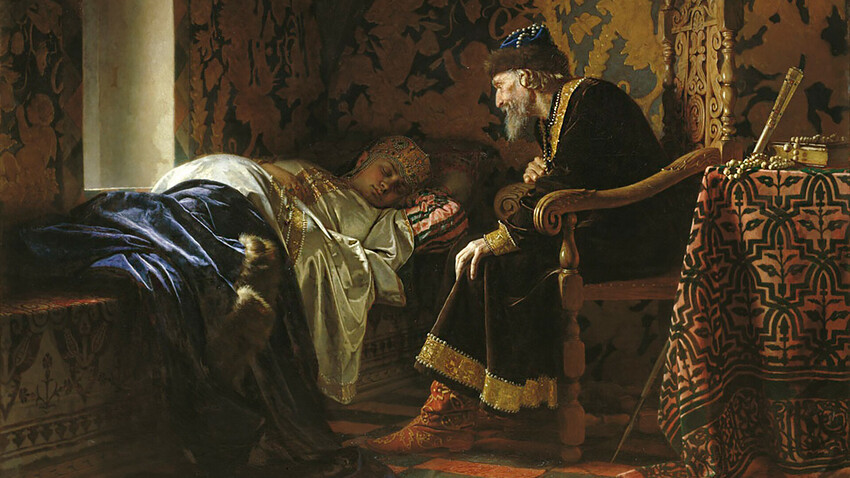
Anastasia Zakharyina-Yurieva
History books mention the first wife of Ivan the Terrible as possessing attractive looks and combining all virtues of the 16th century in herself – chastity, modesty and piety. With these very virtues she managed to conquer the ruler’s heart. She not only became his wife and beloved woman, but also his moral compass – according to the chroniclers of that time, she managed to influence some of her husband’s decisions: “The kindest Anastasia guided and led Ivan towards various virtues.” For example, thanks to her, Ivan called off death sentences and prohibited ‘bear games’ (the pitting of bears against condemned criminals) that he loved so much.
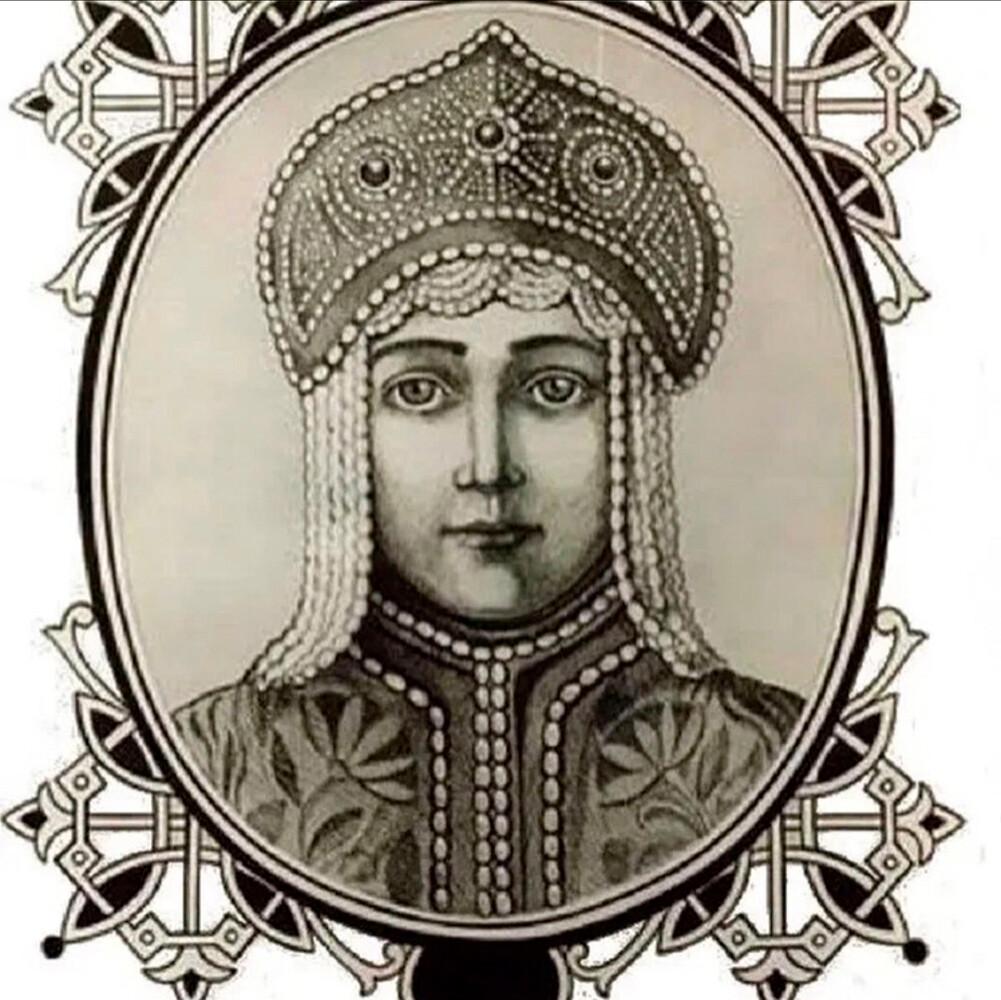
Anastasia Zakharyina-Yurieva
Public DomainOnly their not-always-successful attempts to produce heirs smeared the family idyll – only two kids survived from six: Ivan, later depicted by Ilya Repin in his famous painting, and Fyodor, who became tsar after his father in 1584.
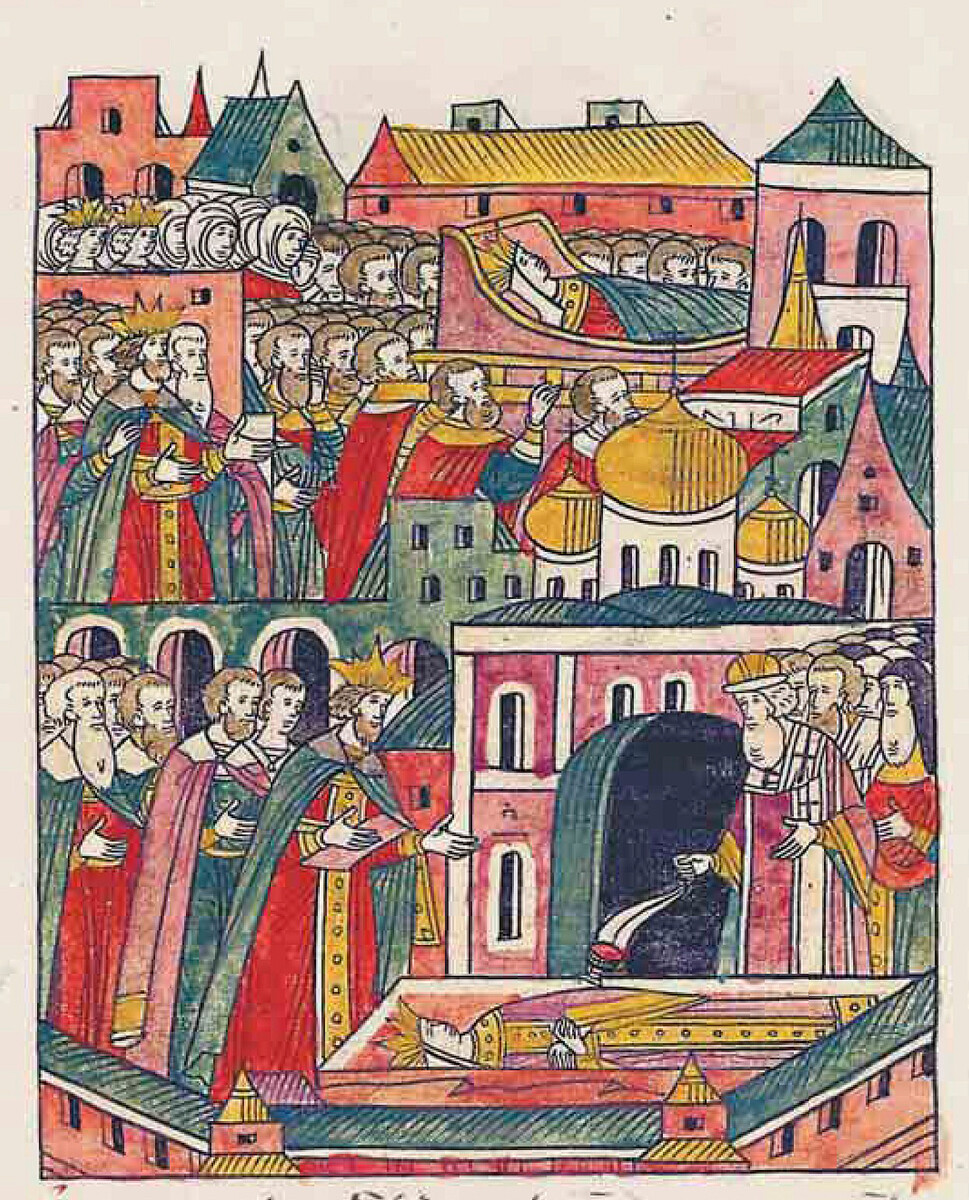
Anastasia's burial.
Public DomainThe tsaritsa died at the age of 30 after a short illness. She was buried with tremendous honors and respect. Even the tsar himself wept during the funeral and could barely stay on his feet. However, the pain of loss was, in time, replaced by suspicion and wrath: he believed that his wife was poisoned by the boyars who didn’t like Anastasia – they thought that they shouldn’t be subjects to someone who was equal to them in status. Only in 2000 did evidence emerge that he, perhaps, was right: arsenic, lead and mercury in mortal doses were found in Anastasia’s remains. Even with the everyday use of medieval cosmetics, which often included these toxic elements, such an amount of dangerous substances couldn’t have amassed.
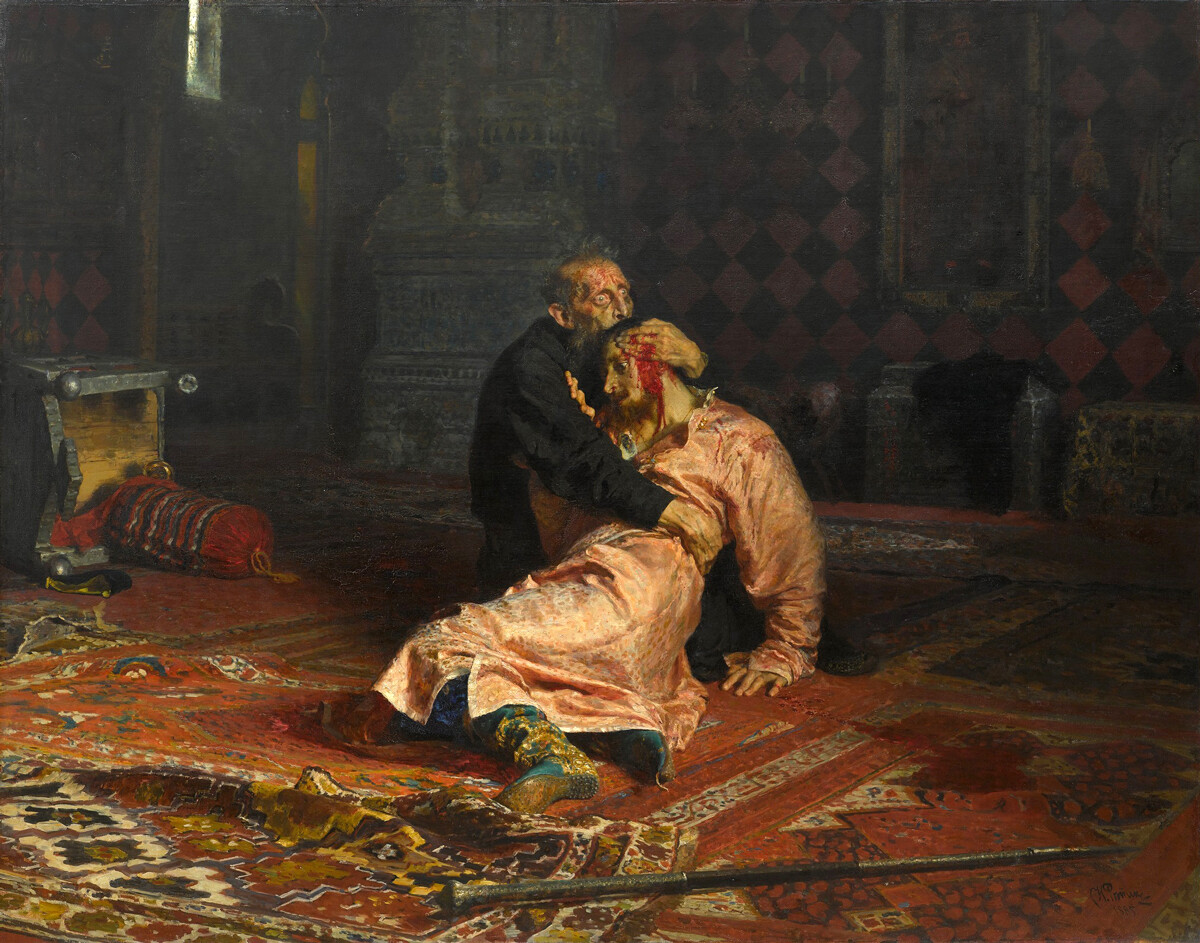
Ivan the Terrible and his son Ivan, Ilya Repin
Tretyakov GalleryAfter the death of his spouse, the tsar’s character hardened. Historian Karamzin later wrote: “There was the end of the happy days of Ivan and of Russia: for he lost not just his spouse, but also his virtues.”
Maria Temryukovna
Ivan the Terrible’s second wife was Circassian princess Maria Temryukovna. She was the daughter of Kabardian prince Temryuk; before the marriage, she was called Kucheney. Initially, Ivan wanted to marry the daughter of the Polish king, but the latter demanded the cities of Pskov, Smolensk and Novgorod in exchange. So ,Ivan ordered a wife “from the Circassians” to be found. He liked Kucheney; before marriage she was christened to Orthodoxy and received the name Maria.
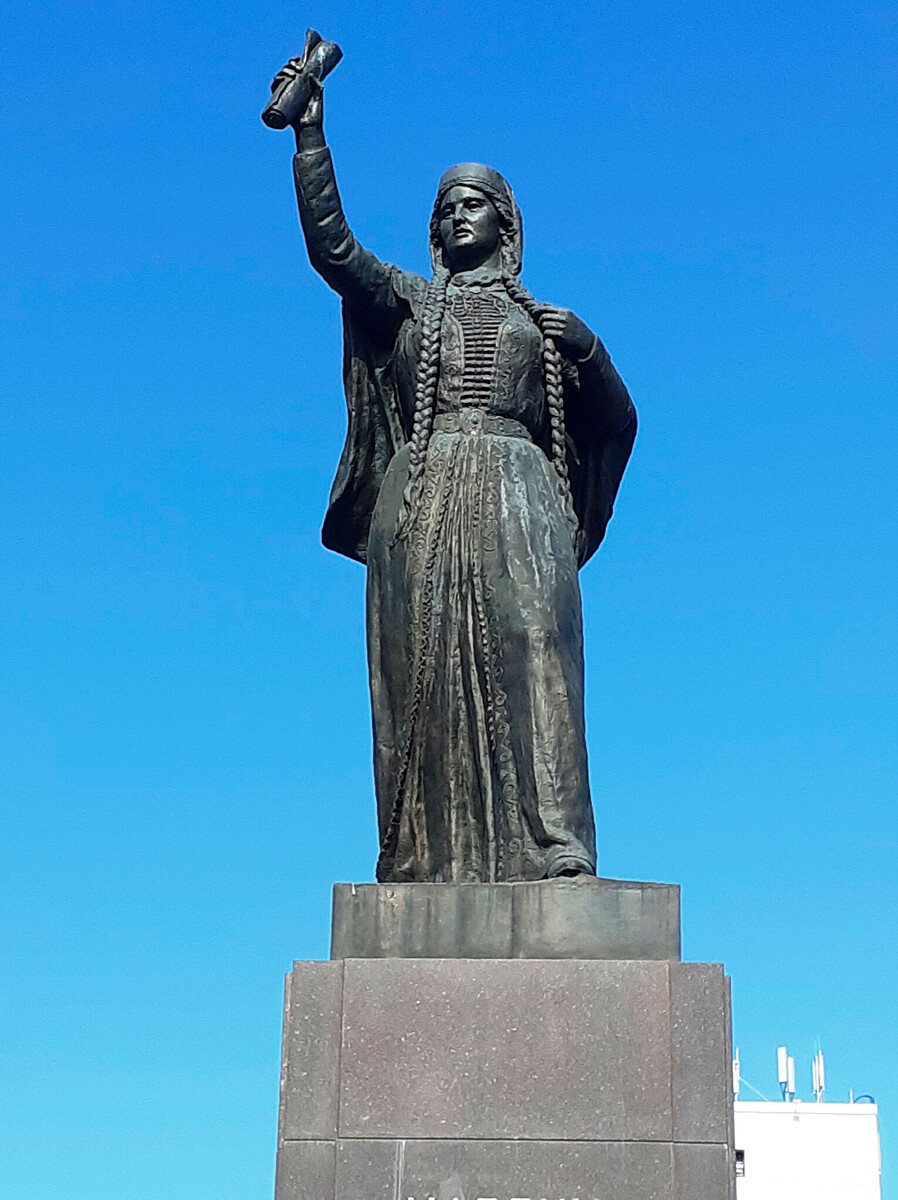
Monument to Maria Temryukovna
Masha Linnik (CC BY-SA 4.0)The tsarina didn’t just support the tyranny of her husband, she constantly used it, getting rid of her enemies with his hands. She didn’t want any children, so she preferred to spend more time with Ivan on military campaigns. Heinrich von Staden, the author of ‘Notes on Muscovy’, claims that it was her who came up with the idea of the ‘oprichniki’ (the tsar’s personal army and his repressive forces), under whom many boyars were executed on treason suspicions.
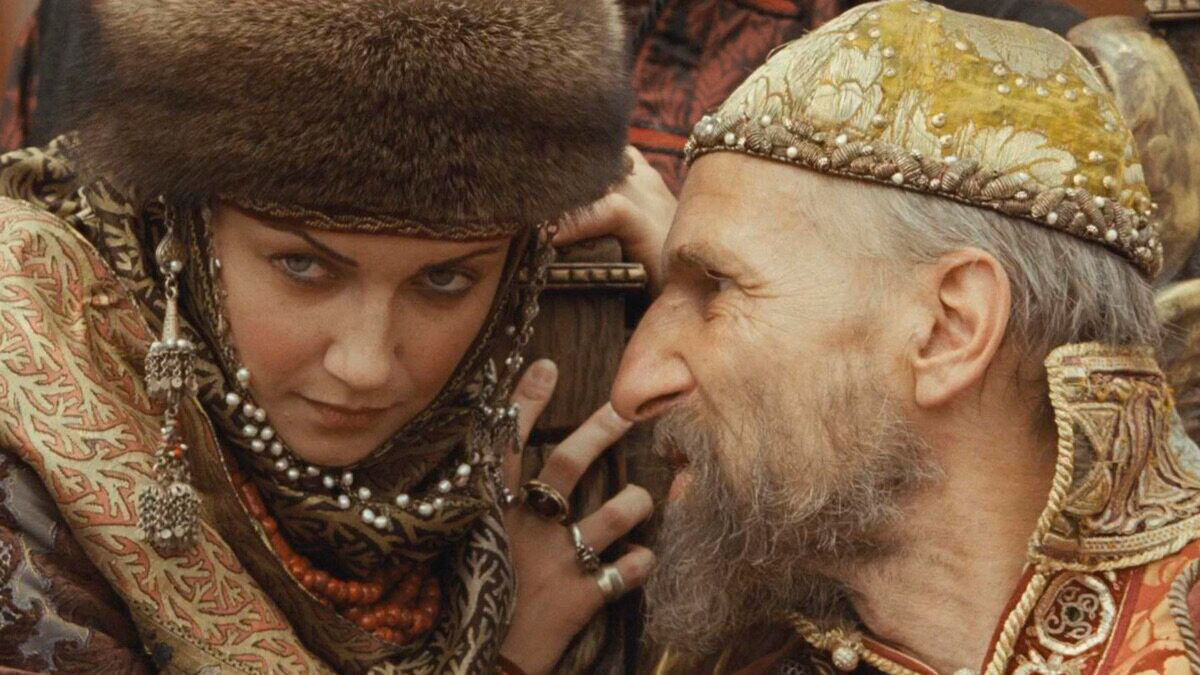
Actress Ramilya Iskander as Maria Temryukovna in the movie "The Tsar"
dir. Pavel Lungin, 2009/ Pavel Lungin's WorkshopMaria died in 1569. As the tsar claimed, she died due to poisoning, once more arranged by the boyars. It’s unclear if that was the case; however, Karamzin noted in his works that, in such a way, Ivan the Terrible had prepared Russia for the ‘horrifying frenzies of his wrath’.
Marfa Sobakina
The tsar’s third marriage was his shortest. The tsar had decided that he ought to have had more heirs, so he arranged a bride show two years after the death of his previous spouse. More than 2,000 young women arrived in the palace from all corners of the country, but only 24 of them managed to enter the tsar’s chambers. The most physically healthy one of them Ivan ordered to be sent to the doctors, after which she was to be prepared for marriage. As such, Marfa Sobakina became a tsarina.
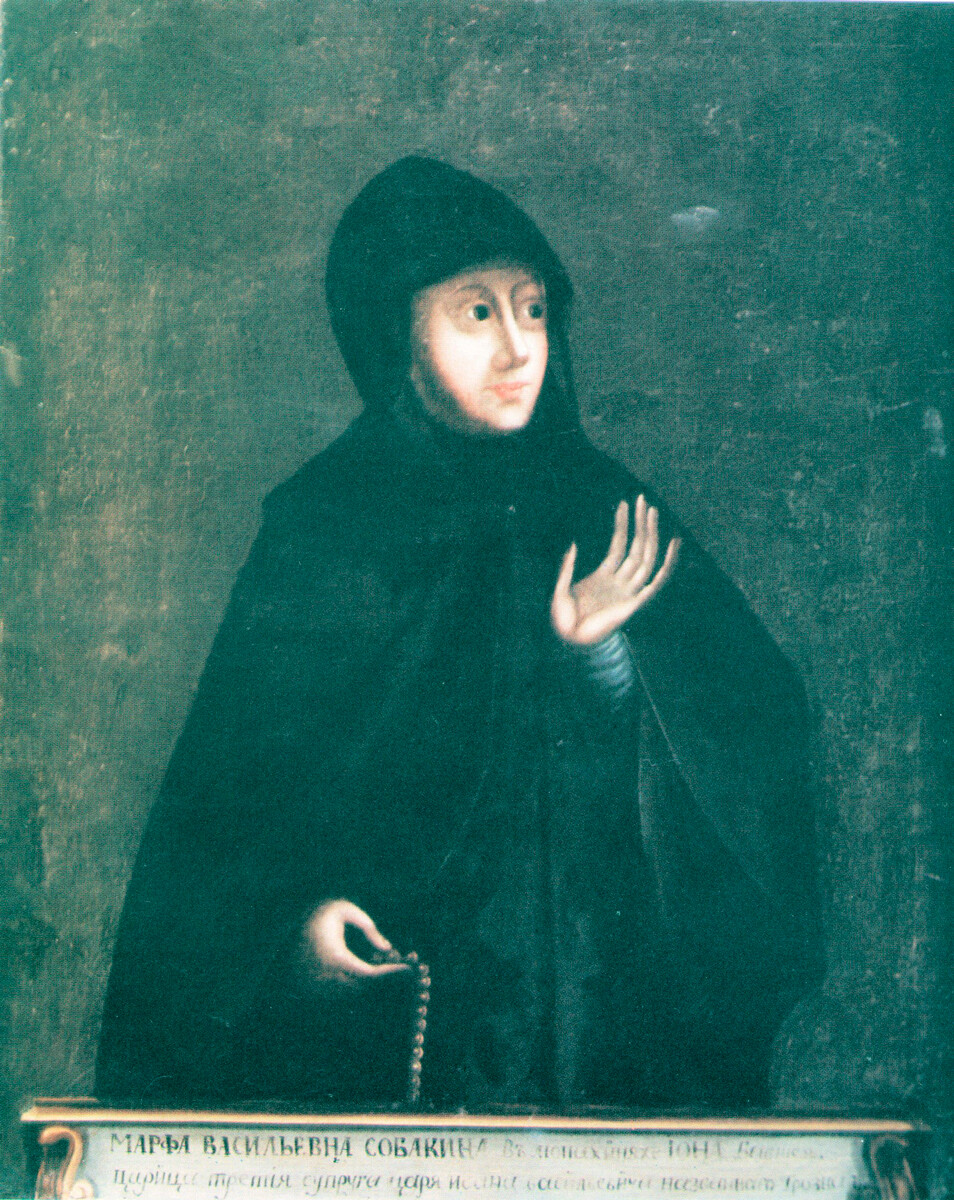
Marfa Sobakina
Public DomainHowever, she didn’t hold this status for long. Just 15 days after their marriage, Marfa died under suspicious circumstances – despite her sound health, she “wilted” rapidly; she began having seizures. Ivan the Terrible habitually proclaimed that his wife was poisoned. Over the course of his investigation, the tsar executed 20 people; Marfa’s father was tonsured a monk, while her brothers were killed for “sorcery”. Perhaps, he was onto something: according to one of the versions, Marfa’s mother allegedly gave her herbal medicine for a speedy insemination. There was the probability of the dose being too large – it doomed the young tsarina.
Anna Koltovskaya
The laws of the 16th century didn’t allow having more than three marriages in one’s lifetime. Nonetheless, after the death of Marfa, Ivan the Terrible managed to persuade the Church to hold a fourth marriage. He insisted that Marfa never became his “full-fledged” wife (they didn’t even manage to spend their first night together), so this marriage couldn’t be taken into account. Everyone had to accept this conditionality; Ivan found himself a new wife – Anna Koltovskaya. She had come second after Marfa at the bride show.
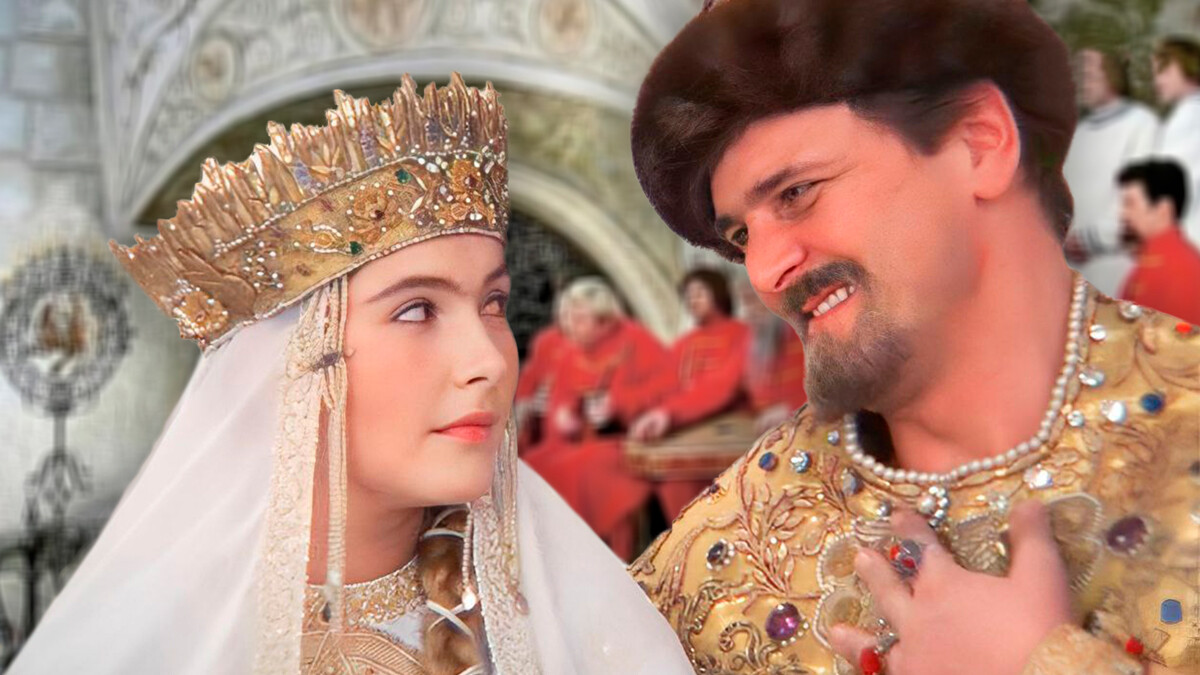
Nina Maslova as Tsarina Marfa Vasilyevna in the movie "Ivan Vasilyevich Changes Profession"
dir. Leonid Gaidai, 1973 / MosfilmHowever, this marriage also didn’t last for long. According to one version, Ivan grew tired of his wife and her ambitions; besides, Anna refused to give birth to heirs. So he got rid of his wife, exiling her to a convent and forcing her to become a nun with the name ‘Daria’. But, the most interesting thing happened to Koltovskaya afterwards.
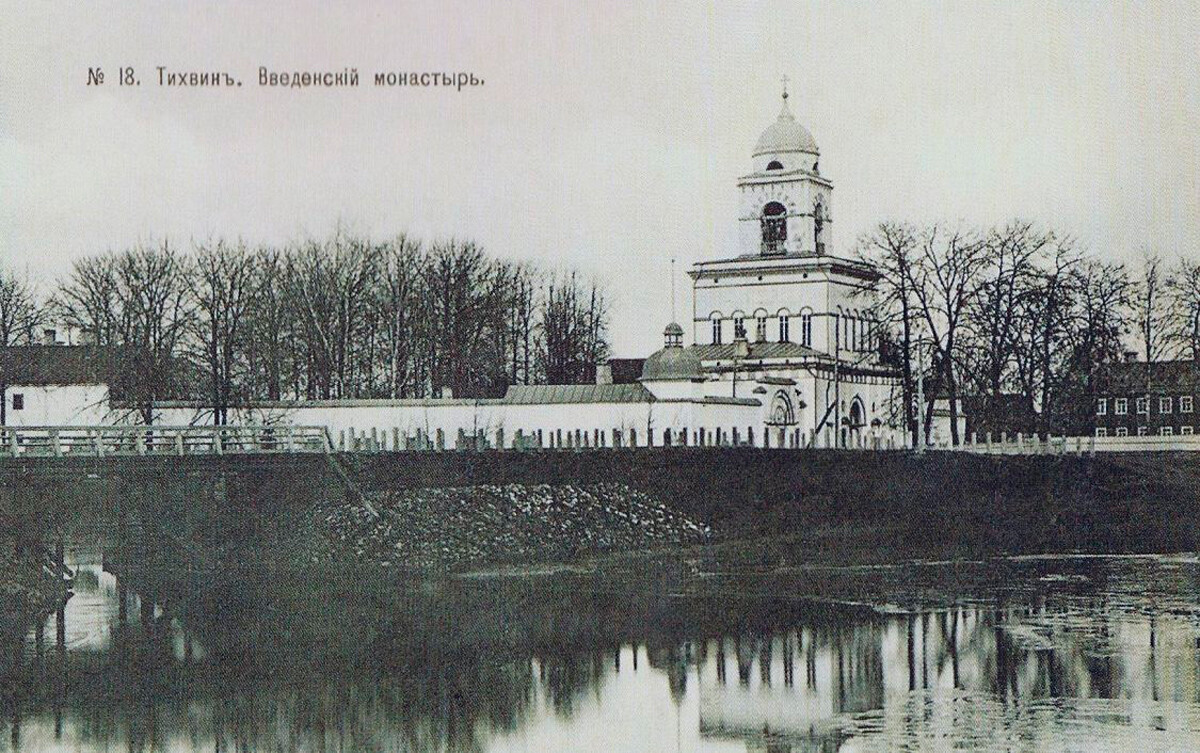
Vedensky-Tikhvinskaya convent
Public DomainShe lived in two convents: first, in a “classic” one for royal persons and, after Ivan’s death – in the Voskresensky-Goritsky convent. In 1604, she transferred to the Vedensky-Tikhvinskaya convent, where she was active in the role of a prioress. When the Russo-Swedish War broke out, she hid from the Swedes (at this point, she was already in her 50s). Then, she lived through the Time of Troubles and began restoring the convent. She also enjoyed the respect and patronage of Tsar Mikhail Fyodorovich, who even sent her personal gifts from his marriages. Daria lived to the year 1626; she died at the age of about 70.
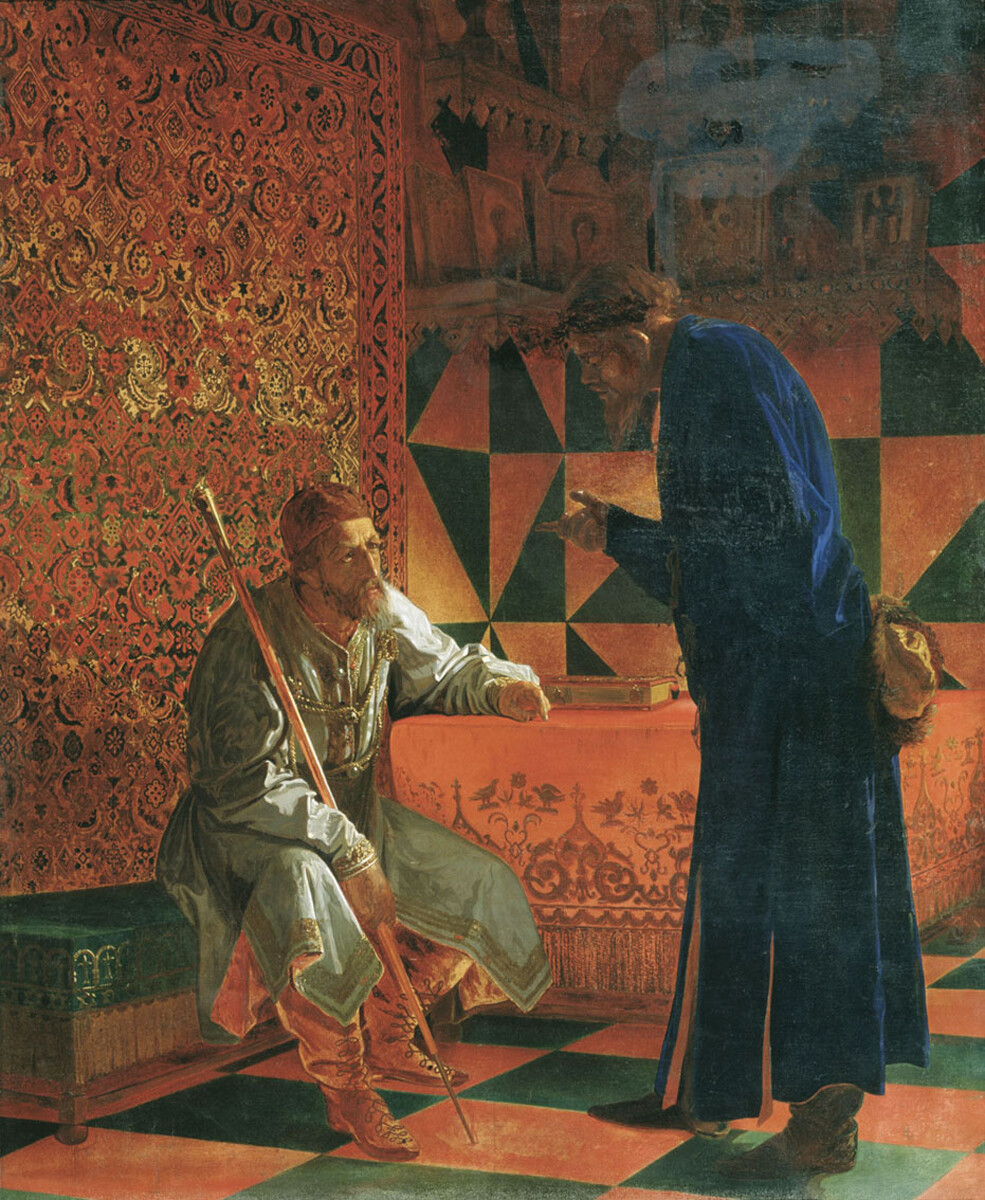
Ivan the Terrible and Malyuta Skuratov, 1870, Grigory Sedov
Public DomainAnna Vasilchikova
Ivan the Terrible married for the fifth time without the Church’s permission: however, the clergy stopped intervening with the tsar’s personal matters at this point, knowing of his short temper. His new wife was Anna Vasilchikova, the daughter of one of his boyar associates. The wedding was quite modest – only the closest people from the tsar’s and tsarina’s entourages were present.
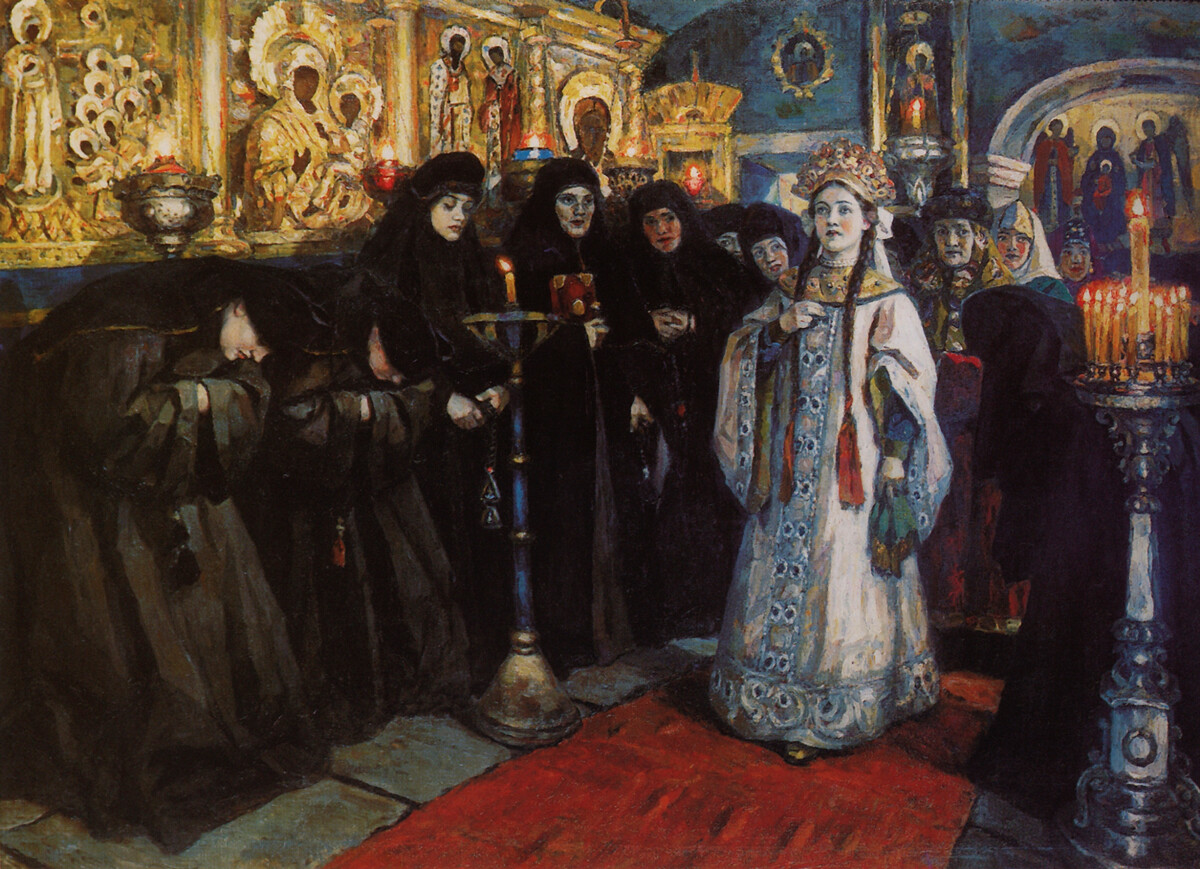
Vasily Surikov "The Tsarevna's Visit to the Nunnery" 1912
Public DomainThe new wife was very modest and fretful; she seemed more like a nun than a tsarina with her behavior and her reclusive way of life. She spent the majority of her time in her chambers and rarely showed herself outside.
According to one version, after just a year, Ivan the Terrible was already tired of living in such a marriage. Soon, Anna ended up in the Pokrovsky Monastery, where she later died.
Maria Nagaya
The last unofficial companion of the tsar was Maria Nagaya, the daughter of a Russian envoy – they were not married in a church, so, according to the laws of the time, she wasn’t an official spouse of the tsar. Because of this, she had sour relationships with both the tsar himself and the spouses of his heirs, who considered her to be not a wife, but a concubine. Ivan the Terrible, having learned about the internal family conflict, took the side of his children and their spouses and threatened to feed Maria to wild beasts.
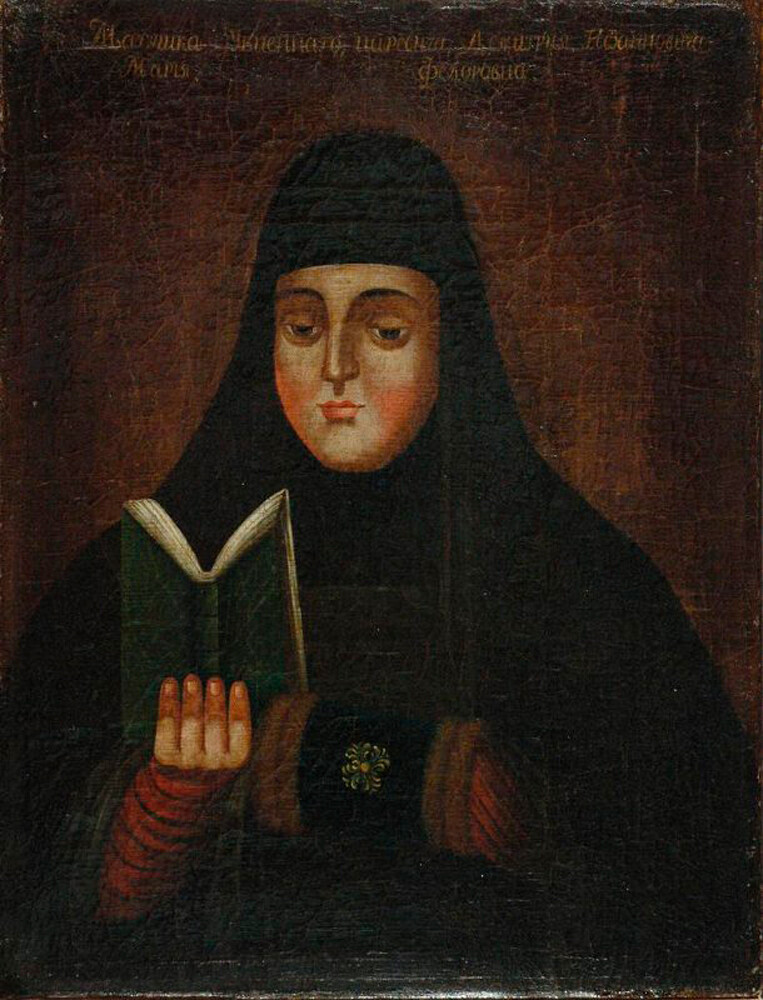
Presumed portrait of M. F. Nagaya
Public DomainIn 1582, Maria gave birth to a son named Dmitry. Two years later, the tsar died; Fyodor, the son of Ivan the Terrible from his first marriage, ascended to the throne. He exiled Maria with her son to Uglich, where the nine-year-old boy died under unclear circumstances.
After the death of the tsarevich, many wished to seize the moment and infiltrate the tsar’s family. From time to time, impostors posed as Dmitry (who allegedly survived). A man called Grigory Otrepyev was the most convincing of them all; he played the role of the “resurrected” prince so well that, in 1605, Maria Nagaya even recognized him as her son. However, she renounced him a year later. When it was brought to light that ‘False Dmitry’ (this is the name under which Otrepyev went down in history) was an impostor, all of Maria’s possessions were seized and she was left in deep poverty. She died in 1611, outliving her husband by 27 years.
If using any of Russia Beyond's content, partly or in full, always provide an active hyperlink to the original material.
Subscribe
to our newsletter!
Get the week's best stories straight to your inbox

